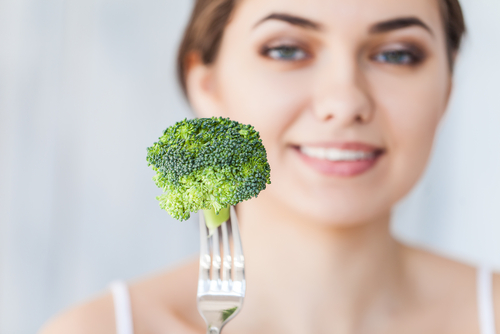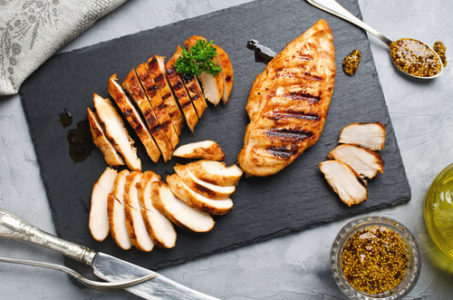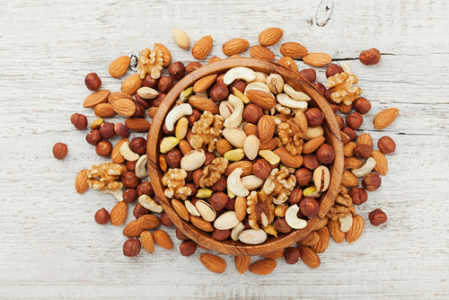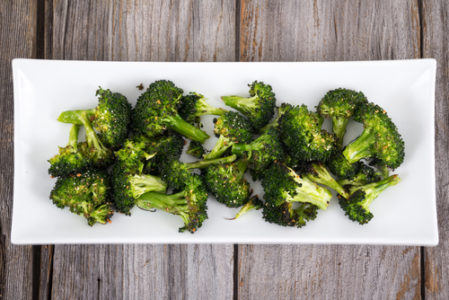
6 Best Foods to Eat While Recovering From Sports Injuries
Categories: General Orthopedics / Sports Medicine
While sports injury pain can vary in intensity, it’s more than likely that you’re eager to recover quickly. Of course, making an appointment with a qualified orthopedic specialist is the easiest way to do this. Naturally, they’ll provide a definitive diagnosis and begin your treatment. However, in addition, they’ll help you learn about the appropriate stretches and exercises to help you recover.
If necessary, your orthopedist will also discuss potential surgeries with you. While these factors are important, maintaining a proper diet is equally as essential. When recovering from a sports injury, the right diet can minimize recovery time, streamline the process and help you reach your goal sooner than anticipated. In this post, we’ll discuss the six best foods to eat when recovering from a sports injury. Keep reading for more information!
1. Foods that Contain Plenty of Protein
Protein is the nutrient that reinforces your body’s muscle tissue. When you suffer a sports injury and can’t maneuver a certain body part, it inevitably loses mass. Eating the right amount of protein can reduce the risk of losing a significant amount of muscle mass.
Therefore, you should focus on eating the right amount of chicken (with the occasional helping of beef). Fish can also be a major source of healthy protein. Also, non-meats like beans, tofu, and nuts can be a steady part of your diet as well.
Protein intake’s especially important when you begin retraining your body, as it can improve muscle development. An orthopedist familiar with your recovery plan can provide specific advice about appropriate protein intake and how to care for your injury at home.

2. Fruits and Vegetables With Vitamin C
One of the main goals during sports injury recovery is reducing inflammation. This is essential to improving range of motion, and restoring your body’s original state. Fortunately, Vitamin-C can help you accomplish that.
Vitamin-C has anti-inflammatory properties, which can decrease (or prevent) inflammation. The collagen that vitamin-C produces also improves the body’s ability to maintain bone, muscle, and tendons. The obvious place to start is with citrus fruits – such as oranges and grapefruits. Bell peppers, spinach, broccoli, tomatoes, and kiwi also have plenty of vitamin C.
3. Omega-3 Fatty Acids
Sports injuries like a sprained ankle can cause a lot of inflammation in the affected area. Foods with omega-3 fatty acids can help control this inflammation.
If you’re looking to introduce omega-3 fatty acids into your diet, then foods like walnuts and chia seeds are the best place to start. Fish (already rich in protein) contains a considerable amount of omega-3 fatty acids. However, ingesting too many omega-3 fatty acids could potentially have the opposite effect. Therefore, rather than taking vitamin or powder supplements, be sure to eat foods that contain these nutrients.
Omega-6 fats, which are often present in oils, also lower inflammation. Canola oil, sunflower oil, corn oil, and other similar products are great for cooking, and can provide this benefit. Coconut oil is another common way for those dealing with arthritis to decrease inflammation. Consult with a dietician or qualified orthopedist for more information about omega-3 fatty acids in your diet.

4. Zinc-Rich Foods
Like protein, zinc is also instrumental in helping you heal wounded tissue. And according to nutritional experts and physical therapists, failing to ingest enough zinc can prolong the healing process.
Common examples of zinc-rich foods include meat, fish, shellfish, and whole grains. Nuts are also a great choice.
However, be sure to stay away from zinc supplements. While they’re one of the best ways to take in large amounts of zinc, this can also lead to a copper deficiency. If you’re curious about how to maintain this balance, contact an orthopedist.
5. Vitamin D/Calcium
Calcium plays a very important role in helping to heal broken bones. However, it’s also crucial for helping the brain to signal nerves and contract muscles properly.
Some examples of calcium-heavy foods include broccoli, almonds, okra, and of course: dairy products.
While there are few foods that contain naturally-occurring vitamin-D, it can actually benefit your recovery. Vitamin-D enhances the body’s ability to absorb and process calcium for recovery, in addition to helping independently. Vitamin-D is one of the best methods for natural pain management. Also, these nutrients can help to prevent sports injuries in children.

6. Foods Rich in Fiber
In order to recover from injuries like tears and strains, orthopedists generally recommend keeping the injured body part immobile. This prevents additional inflammation. However, throughout the recovery process, it can lead to weight gain if you’re not careful. Obviously, you can’t hop on a cardio exercise machine and burn fat with a workout. That’s why consuming fiber-heavy foods is important.
Fiber-heavy foods will help you to feel full much faster and prevent you from overindulging. This will help you control your diet naturally. Also, fiber-heavy foods often contain plenty of other nutrients.
So, be sure to include a serving of broccoli or spinach with your dinner. Rather than eating potato chips as a snack, opt for fruit instead.
While it’s important to control your body weight and food intake, it’s equally as important not to under-eat. Ask an orthopedist for more precise instructions about diet and proper portions.
Central Orthopedic Group – Long Island’s Orthopedic Specialists
Nutrition’s important, but remember: your diet is only one piece of the puzzle. In order to recover quickly, without the likelihood of a recurring injury, you need a qualified orthopedist.
At Central Orthopedic Group, we’re prepared to help you through each phase of the recovery process. If you’ve suffered a sports injury, be sure to contact us to enjoy a quick, speedy recovery!
